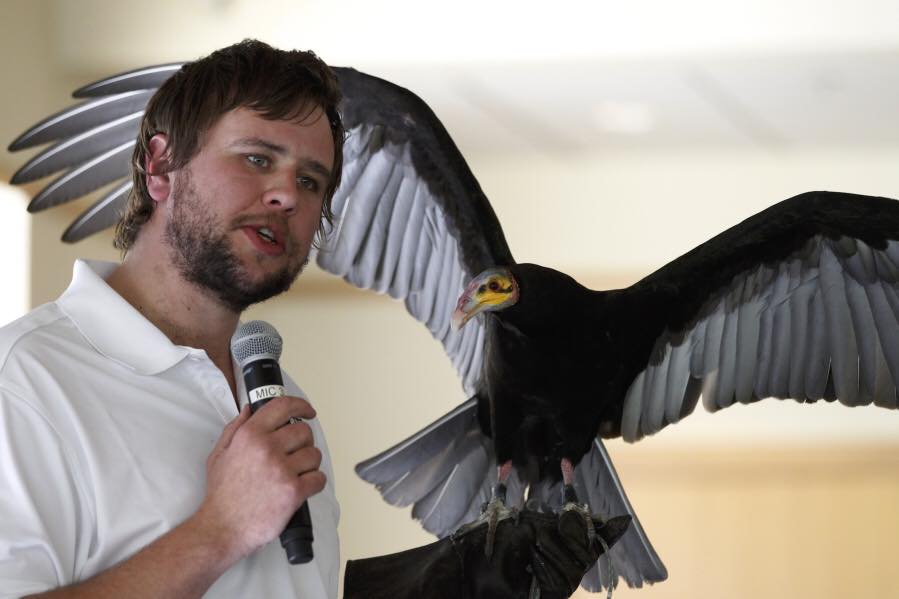
Mewsings from Millie – May 2024
(Reprinted with permission from Burien Wild Birds Unlimited)
Hello and welcome once again to my miscellaneous musings.
I continue to be fascinated by the intriguing information I learn about our amazing “common” backyard birds.
Did you know that an American Robin can eat twenty-eight six-inch long earthworms a day? That’s fourteen feet worth of worms! They change their feeding habits depending on the time of day, eating more earthworms early in the day when they are easier to find and switching to fruit later in the day.
Unlike most birds, Robins do not lay their eggs at sunrise. Again, it’s because of the worms. Since the worms are found more readily early in the morning American Robins feed first thing, then return to their nest to lay their eggs during mid-morning.
Both male and female American Robins have calls and alarm notes, but only the male Robin sings. The longest known life span of an American Robin is thirteen years, eleven months!
Would you believe that a Steller’s Jay is not really blue? It’s true! There is no pigment in its feathers!
The Steller’s Jay can show a great deal of variation in appearance throughout its range, with some populations featuring black crests and backs, and others blue. Steller’s and Blue Jays are the only North American jays with crests. The longest known life span for a Steller’s Jay is sixteen years.
The House Finch has not always been found in the eastern United States. In 1940, some birds were illegally captured in California and imported to New York by pet dealers. Fearing prosecution, the dealers released their “Hollywood Finches” on Long Island. Since then, House Finches have spread to all corners of the eastern US, and have also rejoined their relatives in the west.
Male House Finches display a wide variety of plumage color ranging from gray to bright crimson. The coloration comes from carotenoid pigments found in some wild foods. The more pigment present in the food eaten when growing new feathers during the annual molt, the redder the male. Female House Finches favor more intensely colored males because their bright plumage indicates more success in competing for food.
House Finches were introduced to the Hawaiian Islands sometime before 1870. Hawaiian House Finches don’t look like the House Finches we know because on the islands their favorite food is papaya, and papaya has no red pigments.
Male Red-winged Blackbirds hold territories for an average of two and a half years, but one male had the same territory for at least eleven consecutive years!
95% of male and 99% of female Red-winged Blackbirds are polygamous. The maximum number of fledglings known for a single female is twenty-four. The record for a single male is one hundred seventy-six fledglings!
The Song Sparrow is found in every state of the Union and every Canadian province. They are the most common and widespread sparrow native to North America. There are thirty-one recognized subspecies of Song Sparrow, more than any other bird species on the continent.
The Song Sparrow is probably parasitized by the Brown-headed Cowbird more than any other bird. What does that mean?
It means the Brown-headed Cowbird lays its eggs in the nests of the Song Sparrow and many other kinds of birds. It leaves the rearing of its chicks to other parents. Recently, a couple of my people were on the Washington Coast and saw a large flock of young, pale Brown-headed Cowbirds. It made me wonder – if the chicks were raised by ‘foster parents’, how do they later recognize their own kind and rejoin the flock to mate?
It seems that Brown-headed Cowbirds may employ a secret password to identify their own species. It has been found that a young, blind six-day old Cowbird chick can already discern sounds that are produced only by adult Cowbirds. Adult Cowbirds will visit Cowbird fledglings from foster homes and teach cowbird-specific behavior. One particular trait resides in the bird’s “chatter call”. Six-day-old and two-month-old naive Cowbirds are attracted only to the chatter calls of adult Cowbirds.
No matter what you may thing about Brown-headed Cowbirds, you must admit that is extremely interesting!
Until next time,
Millie
The Muse of Mews



